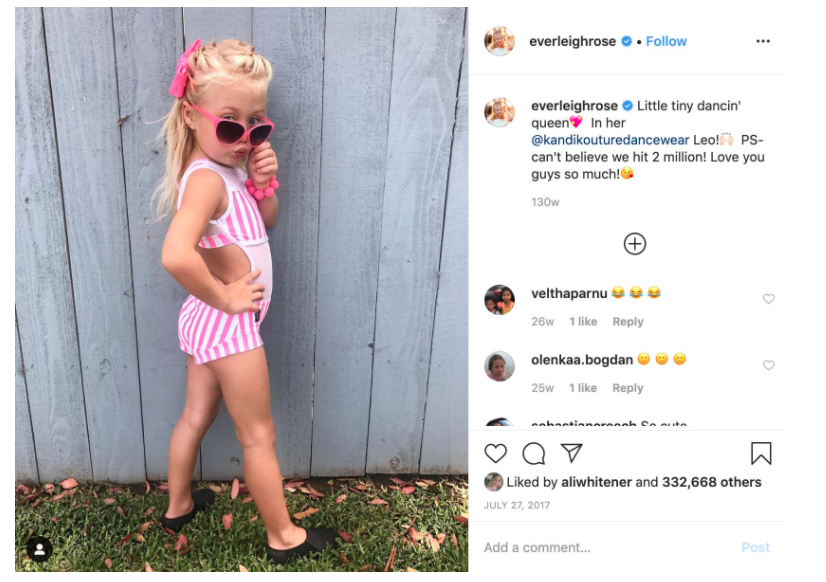
Community banks may be missing out on a big opportunity here: Kidfluencer marketing!
I can see it now; some 10-year-old kidfluencer getting paid tens of thousands of dollars to show himself opening a community bank checking account on his YouTube channel. Sound wrong? I’m not surprised. In fact, just about everything I’ve read about kidfluencer marketing is not only wrong; it's disturbing.
Sure, there are some drawbacks to exploiting children in a cottage industry that is believed to contribute to potentially harmful psychological behavior — not to mention the possibility of hefty fines — but why not take advantage while nothing is being done to stop it? Everyone else is… taking advantage, that is. tracckr says that last year the global kids’ digital ad market (dollars spent on TikTok, YouTube, and Instagram… with perhaps a few lesser well-known platforms sprinkled in) was worth $1.8B.
So, why not take advantage? I’ll tell you why not. It’s not often that I’m offended by something I see or read, but I’m making an exception here:

And the parents of these kids think this is ok. And why shouldn’t they? They’re making unbelievable money off their kids. If you’ve been following this at all, you’ve probably seen this startling (and disturbing) factoid: There are 17-year-olds out there earning more than the CEOs of Exxon, Starbucks, McDonald's, and Delta. And then there’s the 10-year-old who, granted, isn’t doing quite as well, but as the star of his toy-themed YouTube channel, clears $25M a year. What does he do to earn that comp? He opens boxes of toys and talks about them.
So, how and why do they do it? The “why” part is easy. There’s big money in it. As for how, well, there are a couple of ways to go about becoming a multi-millionaire kidfluencer. First, there's growing your following organically, which sadly (if you have high hopes of being a billionaire before you can vote), can take a few years. If you simply can’t wait, however, you do have options… like Kicksta! For the low, low price of just $7.27/day, Kicksta will make you an Instagram star. They "provide Instagram growth service to over 100k Instagram accounts of influencers, social media managers, business owners, and agencies, growing followers organically through our proprietary AI-powered technology. No spam, no fake followers, no bots. Just pure organic growth powered by our cutting-edge Artificial Intelligence technology.” There you go; overnight kidfluencer.
According to The Hill and “Instagram sparks new concerns over kidfluencer culture,” experts say that while YouTube has largely been the main vehicle for influencer marketing aimed at children — with videos from so-called kidfluencers garnering millions of views —Facebook’s plans for a kid-centered Instagram platform are sparking backlash from lawmakers and advocates who view kidfluencer marketing as a deceptive tactic to reach kids.”
Facebook, justifiably so, has been facing pretty stiff opposition to its plans to create an Instagram for kids. Thankfully, this is fueling new calls to crack down on marketing to children masked as "entertainment." In my opinion, kidfluencer marketing exploits both its online stars (although the parents of these multi-millionaire kids would certainly have you believe otherwise) and the vulnerable pre-teens it targets. In their defense, and in typical Facebook fashion, spokesperson Stephanie Otway said the company “will not show ads in any Instagram experience” it develops for kids but “doesn’t have more specifics to share about ad policies as it is in the early days” of exploring the platform. Early days… right.
The damage that this type of marketing can do is pretty well chronicled. “The 2020 Common Sense Census: Media Use by Kids Age Zero to Eight,” report shows that children under the age of 8 consume digital media for almost two and a half hours a day, on average; over two-thirds of 5- to 8-year-olds have their own tablet or smartphone, and three-in-ten parents of children aged 9 to 11 report their children use TikTok. While kids are increasingly living their lives online, new reports have highlighted the variety of threats to young people online, including algorithms that serve dangerous and inappropriate content to young users, the damaging mental health effects of influencer content, and platform designs that keep kids on social media platforms for lengthy periods of time. The report analyzed 1,639 YouTube videos watched by children 8 and younger during a one-week period last year and found that advertising occurred in 95 percent of early childhood videos. Moreover, the report found 45 percent of videos viewed by children 8 and under featured or promoted products for children to buy.
Yes, Congress is taking action, but we all know how quickly that stuff happens. The House Energy and Commerce Committee is involved and Sens. Ed Markey (D-Mass.) and Richard Blumenthal (D-Conn.) have sponsored the KIDS Act, which would prohibit websites from recommending content that includes influencer marketing, such as unboxing videos, to children and young teens.
In past blogs, we’ve talked about inclusion, diversity, and social responsibility. For me, I’m going to think twice about doing business with some of the companies that are bankrolling the endorsement deals that fuel this disgusting cottage industry: Mattel, Staples, and Walmart, to name just a few. It may not make a huge impact, but if it makes any at all, I’ll feel good about it.
About Bank Marketing Center
Here at BankMarketingCenter.com, our goal is to help you with that vital, topical, and compelling communication with customers; messaging that will help you build trust, relationships, and revenue. In short, build your brand. To view our campaigns, both print and digital, visit BankMarketingCenter.com. Or, you can contact me directly by phone at 678-528-6688 or email at nreynolds@bankmarketingcenter.com. As always, I would love to hear your thoughts on this subject.